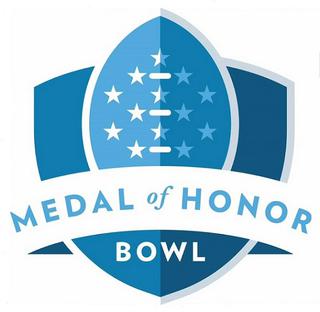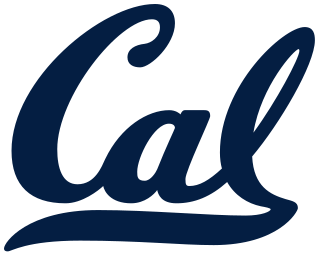
The Grantland Rice Bowl was an annual college football bowl game from 1964 through 1977, in the NCAA's College Division, for smaller universities and colleges, and later Division II. The game was named for Grantland Rice, an early 20th century American sportswriter known for his elegant prose, and was originally played in his hometown of Murfreesboro, Tennessee.

The Glass Bowl was an annual post-season college football bowl game played from 1946 to 1949. It was held at the University of Toledo's Glass Bowl.

Robert Lee "Jack" Boone was an American football player and coach; most notably he served as head coach for the college football team of East Carolina College for ten years.

Robert Lavern Celeri was a quarterback who played for the University of California, two seasons in the National Football League (NFL), and a total of eight seasons in two Canadian leagues – the Interprovincial Rugby Football Union (IRFU) and the Ontario Rugby Football Union (ORFU).
The 1947 Notre Dame Fighting Irish football team represented the University of Notre Dame during the 1947 college football season. The Irish, coached by Frank Leahy, ended the season with 9 wins and no losses, winning the national championship. The 1947 team became the sixth Irish team to win the national title and the second in a row for Leahy. The squad is the second team in what is considered to be the Notre Dame Football dynasty, a stretch of games in which Notre Dame went 36–0–2 and won three national championships and two Heisman Trophies from 1946–1949. The 1947 team was cited by Sports Illustrated as the part of the second best sports dynasty of the 20th century and second greatest college football dynasty.
The 1947 Marshall Thundering Herd football team represented Marshall University in 1947 college football season. Marshall appeared in their first bowl game in school history, the 1948 Tangerine Bowl, where they lost to Catawba.

The Medal of Honor Bowl was an American college football all-star game played in Charleston, South Carolina, in January 2014 and 2015. The bowl was not sanctioned by the National Collegiate Athletic Association (NCAA). Primary beneficiaries of the game were the Medal of Honor Museum on the USS Yorktown aircraft carrier and, initially, the Wounded Warrior Project.
The 1947 Georgia Tech Yellow Jackets football team was an American football team represented the Georgia Institute of Technology in the Southeastern Conference (SEC) during the 1947 college football season. In its third season under head coach Bobby Dodd, Georgia Tech compiled a 10–1 record, finished second in the SEC, was ranked No. 10 in the final AP Poll, and outscored all opponents by a total of 240 to 49. The team played three games against ranked opponents, losing to No. 14 Alabama and defeating No. 9 Duke and No. 12 Kansas, the latter in the 1948 Orange Bowl on New Year's Day.

The 1937 Fresno State Bulldogs football team represented Fresno State Normal School during the 1937 college football season.
The Optimist Bowl was a postseason college football bowl game played in 1946. It was held at Public School Stadium, in Houston.
The 1948 Pacific Tigers football team was an American football team that represented the College of the Pacific (COP) during the 1948 college football season.
The 1947 Pacific Tigers football team was an American football team that represented the College of the Pacific (COP) during the 1947 college football season.
The Burley Bowl was a postseason college football bowl game played from 1945 through 1956. It was held each year on Thanksgiving Day in Johnson City, Tennessee, at the city's Memorial Stadium, which was demolished in July 2010. The game was part of an annual two-day tobacco festival, with the name of the bowl coming from Burley tobacco. Like some other postseason match-ups of the era, such as the Grape Bowl, Glass Bowl, and Optimist Bowl, results are listed in NCAA records, but the games were not considered NCAA-sanctioned bowls.
The Pythian Bowl was a postseason college football bowl game played from 1949 through 1951. In 1952, the game was played under the name of Lions Bowl. The game was played each year in December in Salisbury, North Carolina, at Shuford Stadium on the grounds of Catawba College. The bowl's original name came from the Knights of Pythias, a fraternal organization, with proceeds from the game going to a local orphanage. The 1952 game was named after Lions Clubs International, with game proceeds again being used for charitable works. Like some other postseason match-ups of the era, such as the Grape Bowl, Glass Bowl, and Optimist Bowl, results are listed in NCAA records, but the games were not considered NCAA-sanctioned bowls.
The Elks Bowl was a postseason college football bowl game played after the 1953 and 1954 regular seasons. There was also an earlier playing of the game, at the junior varsity level, in 1952. Each game was held at a different venue in North Carolina. The bowl's name came from the Benevolent and Protective Order of Elks, a fraternal order, with proceeds from the game going to their charitable works. Like some other postseason match-ups of the era, such as the Grape Bowl, Glass Bowl, and Optimist Bowl, results are listed in NCAA records, but the games were not considered NCAA-sanctioned bowls.

The Bicentennial Bowl was a postseason college football bowl game played after the 1975 and 1976 regular seasons. Each game was held at a different venue; the first game in Little Rock, Arkansas, and the second game in Richmond, Virginia. The bowl's name came from the United States Bicentennial. Results are listed in NCAA records, but the games were not considered NCAA-sanctioned bowls.
The 1964 NCAA College Division football season was the ninth season of college football in the United States organized by the National Collegiate Athletic Association at the NCAA College Division level.
The 1972 NCAA College Division football season was the 17th and final season of college football in the United States organized by the National Collegiate Athletic Association at the NCAA College Division level.












